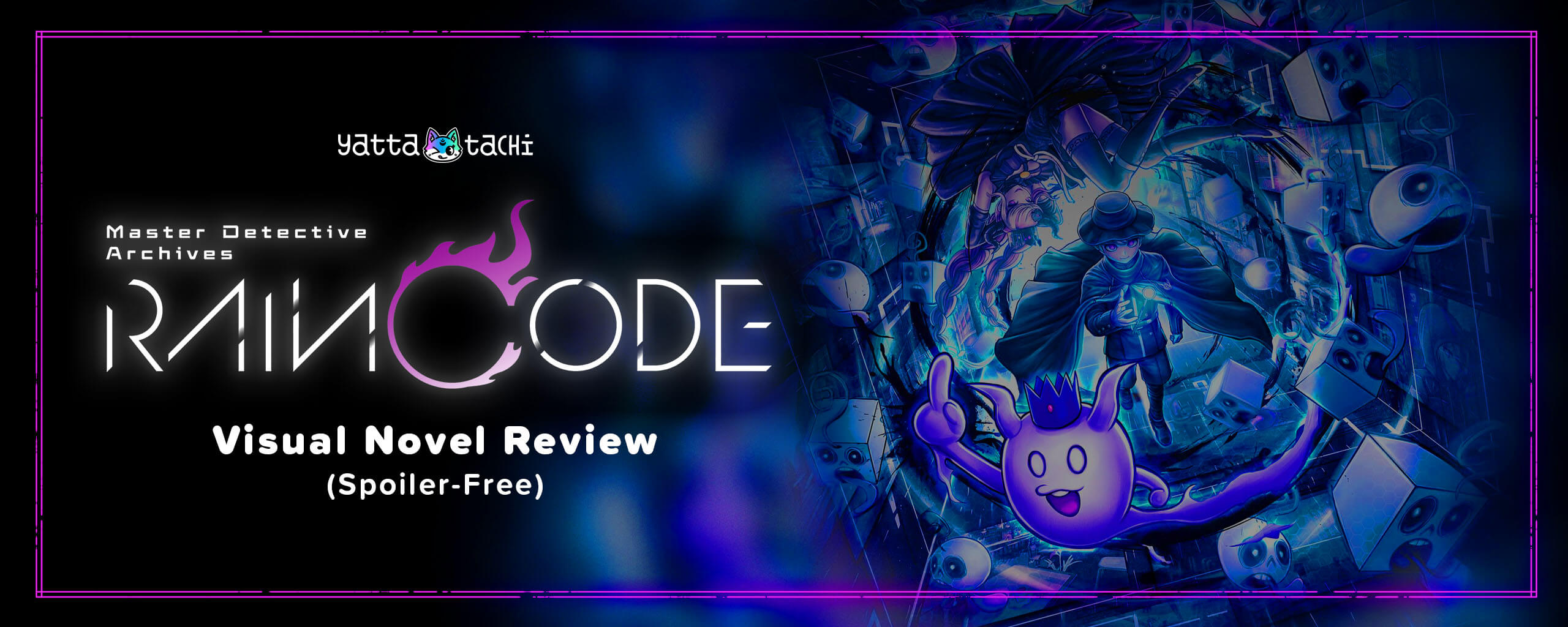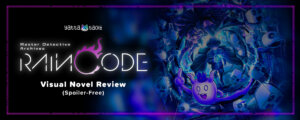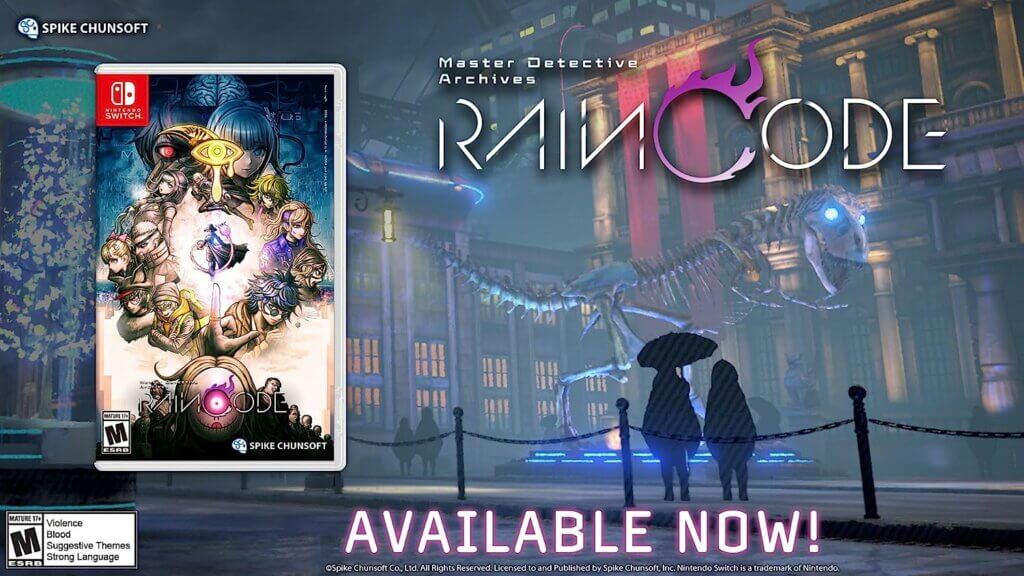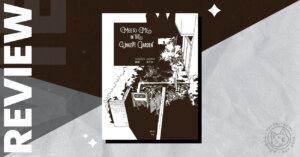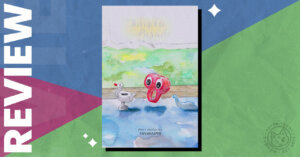Content Warning: Master Detective Archives: Rain Code contains a lot of dark and mature content that is not suitable for all players. As this is a mystery game and many of these elements are directly involved with the mysteries, please refer to the ESRB rating for a spoiler-free content warning, or the Content Warnings (Spoilers) section of this article for a more detailed description of the game’s contents.
Table of Contents
- Game Details & Game Artwork
- Game Trailer
- Storyline
- Art and Music
- Gameplay
- Characters
- Story and Localization
- Content Warnings (Spoilers)
- Verdict
- Purchase The Game
- Credits
Rain Code Game Details
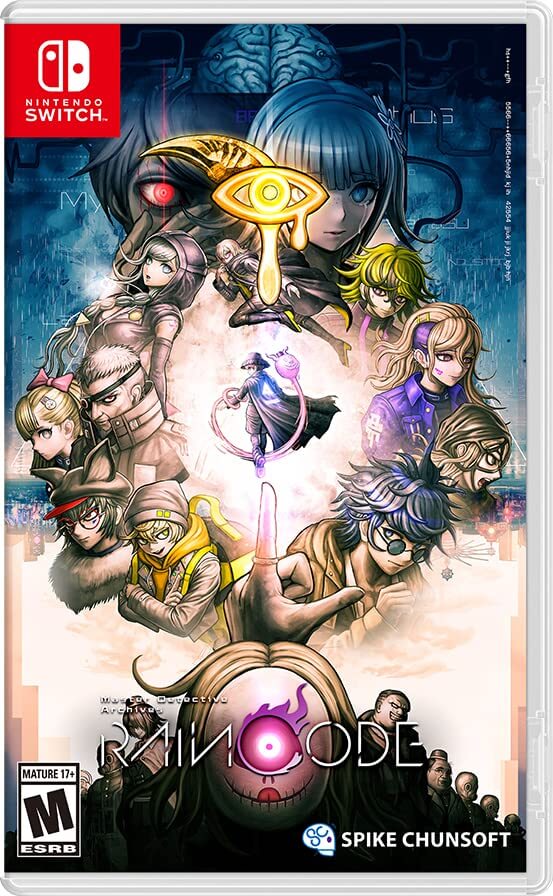
Genre: Adventure, Murder Mystery, Visual Novel
Platform: Nintendo Switch
Release Date: June 30, 2023
ESRB Rating: M for blood, strong language, suggestive themes, and violence
Game’s Official Site: https://www.spike-chunsoft.co.jp/raincode/en/
Developer and Publisher: Too Kyo Games and Spike Chunsoft
Rain Code’s Game Trailer
Rain Code’s Storyline
It’s always raining in Kanai Ward.
The World Detective Organization’s mission is to find the truth to every mystery in existence and bring happiness to the people. Members of the organization, known as Master Detectives for their unique crime-solving abilities, travel the world to unravel everything from the most mundane to the most sinister and deplorable acts, discarding emotions to form a perfect solution through a perfect deduction. Their next destination: Kanai Ward.
A young man wakes up not knowing who he is, not knowing where he is, and with nothing to give him direction but for two things in his pocket: a train ticket, and a letter addressed to Yuma Kokohead telling him to board the Amaterasu Express heading to the Special Autonomous Zone of Kanai Ward, meet up with the other Master Detectives on site, and await further instruction. With nothing else to go off of, Yuma rushes onto the train in hopes of finding someone who may know who he really is.
Things won’t be easy for this detective. Yuma is quickly put to the test in life-or-death situations and is forced to solve mysteries in order to keep himself and those around him alive. But how easy of a time can he have with his memories gone and a spirit following him around, claiming to be a Death God?
Rain Code’s Art and Music
Master Detective Archives: Rain Code is as close to a successor to the Danganronpa series as anyone can get, and having veterans from the famous murder-mystery series work on this newest title cements that fact.
Danganronpa fans will immediately recognize Rui Komatsuzaki’s unique art style from the opening cinematic. The dark colors, hard lines, varied character designs, distinctive facial expressions, and insane hairstyles all harken back to the students of Hope’s Peak Academy. Though the setting and story isn’t restricted to a school building or students, it’s impossible to not feel like Rain Code takes place somewhere in the same world as that demented bear.
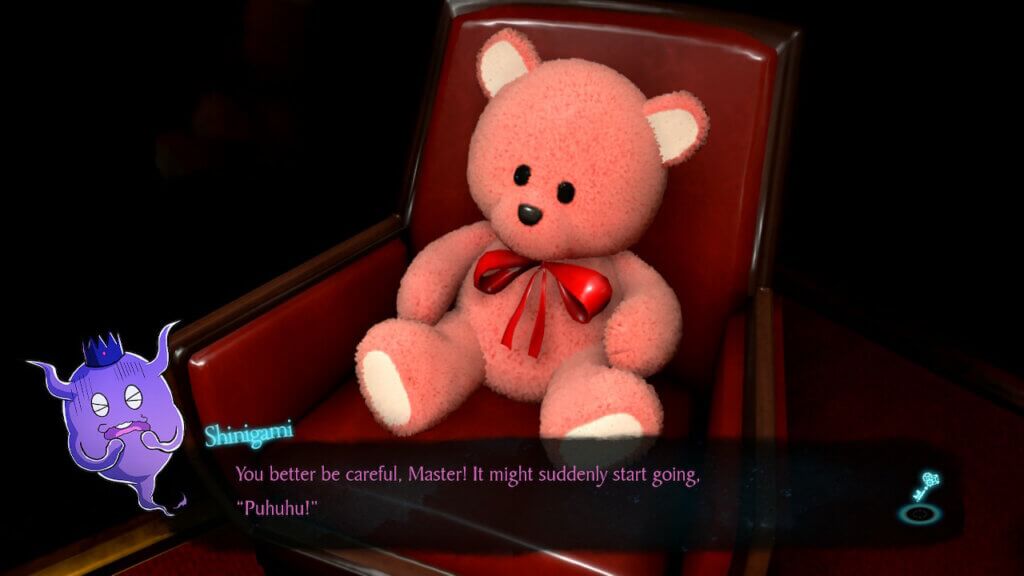
The 3D art and cinematics did a lot in terms of changing the feel of the game. Gone are the days of bobbing through halls and having cardboard cutouts of characters look at you from every direction. The world feels full and lively. NPCs walk around and interact with their environment, giving a level of immersion that the older game just can’t stand up to. Though not every NPC will have a distinctive look–most are covered in raincoats with the hoods up–so many have a level of individuality that makes the world feel populated.
The music also harkens to the Danganronpa series, with Masafumi Takada taking the reins for this newest title. His take on Kanai Ward’s sound is similar to his previous work. His mixture of electronic, jazz, techno, and hip-hop is as quirky as it is addictive. I’ve found myself listening to the Danganronpa soundtracks while working before, and Rain Code will now be joining the rotation.
Between the art and the music, there’s no way to not see Rain Code as a new take on the Danganronpa series, and I’m totally cool with that. It feels like coming back to a favorite place after years away, and I think it’s a great way to invite longtime fans of the older series back for the next adventure while still being incredibly unique and unforgettable for newer players.
Rain Code’s Gameplay
Rain Code is an Adventure game with Visual Novel elements. Players take on the role of Yuma, a young detective who goes around solving mysteries. The game is linear with a world that gradually grows and is explorable. Interacting with the environment can gain players Detective Points, which are used to purchase and upgrade skills for Yuma during the Mystery Labyrinth segments of the game. There are also side quests that unlock as players progress to rack up more DP, but they’re entirely skippable and missable.
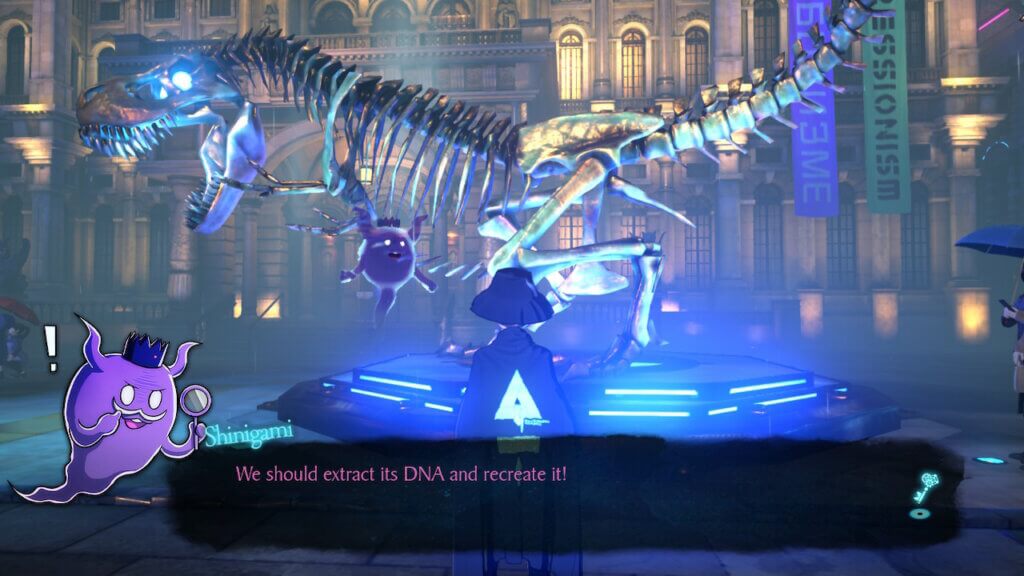
The game can be seen as containing three parts: the exploration segment, where players interact with characters to progress the main story and learn more about the world; the investigative segment, where players examine crime scenes, interview witnesses, and gain other information pertaining to the crime; and the Mystery Labyrinth, which is the physical manifestation of the mystery in the real world set in another dimension.
Most of the game in the overworld involves players running from place to place, clicking on a few things, and listening to a lot of dialogue, with a handful of quicktime events thrown in. In the Mystery Labyrinth, however, Yuma’s Detective Skills come into play, and players must figure out how the mystery was committed through choices and minigames. Yuma has a stamina bar that depletes if he’s hit by an avoidable attack or chooses a wrong answer. Some minigames will also have time limits. If the stamina bar or the time limit runs out, players will receive a Game Over and be forced to retry a portion of the Labyrinth. At the end of each Labyrinth, players are scored based on how well they did and will receive Detective Points accordingly.
There are a number of different minigames that appear throughout Rain Code, many of which Danganronpa fans will find familiar. In these, players will use Solution Keys (physical manifestations of evidence gathered while investigating, similar to Truth Bullets) to unlock doors, counter arguments, or shoot down incorrect lines of thought. Some minigames involve dodging a barrage of statements until a false statement appears that can be repelled or destroyed with a Solution Key, while others are quick time events where players are asked a question and given two or three answers where they need to choose the correct one before time runs out. There is also a word game where players are given an incomplete statement and must fill in the blank by shooting letters or letter clusters in the correct order to spell out the missing word. At the end of each Mystery Labyrinth is the Deduction Denouement. Similar to the Closing Argument, this is where players piece together the clues in a comic book-like sequence to lay out what and how exactly the mystery occurred, solidifying the culprit(s) and wrapping up the mystery.

The controls for all of these minigames were pretty fluid and easy to execute, if a bit gimmicky. They definitely helped to break up the monotony of clicking A to progress the dialogue, and many of the Mystery Phantoms (bosses based off characters who are trying to hide or cover up the mystery in the real world) had insanely cool designs.
The game gives a tutorial before each new segment and typically uses the scenario currently happening as the example, showing the right answer in the process. While I’m not sure how else it could have been done, I do wish the examples didn’t use the upcoming segment to maintain the integrity of the mystery. I found many of the mysteries to be easy to solve, and this made it more so.
As a whole, the gameplay is pretty easy, and it’s helped along by how much the game pushes players to the right answer. Though there were a handful of difficult or tricky instances, most of the dialogue and minigames lay out the answer in fairly obvious ways, especially after messing up a segment.
Rain Code’s Characters
Yuma Kokohead
(Japanese VA: Katsumi Fukuhara – English VA: Lucien Dodge)
After waking up in a train station with no memories of who he is or what he’s doing, the protagonist follows the clues left in his pocket to figure it all out. A train ticket and a letter addressed to Yuma Kokohead takes him on a journey to Kanai Ward as a detective-in-training to solve the mysteries plaguing the city. He’s got a lot of hope and determination, but that doesn’t stop him from worrying about and questioning everything, even himself.
Shinigami
(Japanese VA: Sayumi Suzushiro – English VA: Anjali Kunapaneni)
This Death God has a unique taste in jokes and she isn’t afraid to speak her mind, which is depraved. She is a degenerate and I love her. Shinigami has two forms–a cute little round ghost which she is in most of the time, and a humanoid form that she takes while inside the Mystery Labyrinths. Yuma is the only one who can see or hear her due to their pact. While she can’t do much in the real world, Shinigami can exert her powers while inside the Labyrinths to help Yuma solve mysteries.
Vivia Twilight
(Japanese VA: Yuichiro Umehara – English VA: Aleks Le)
Forensic Forte: Spectral Projection
Vivia is one of the Master Detectives sent to Kanai Ward, though he finds the entire thing to be a bother. He wants nothing more than to lay about in ‘comfortable’ places reading books and never having to walk or carry things again. How he finds a fireplace to be ‘comfortable’, though, I’ll never know.
Aphex Logan
(Japanese VA: Showtaro Morikubo – English VA: Stephen Fu)
Forensic Forte: Life Detection
This is not the kind of person you’d want to run into in a dark alley. Or a lit one. Aphex grew up in the roughest parts of town and quickly learned that violence was the answer to all his problems. After a series of events, he found himself becoming a Master Detective, and he’s sent to Kanai Ward along with others. His demeanor makes him hard to approach, and it’s best if most people steer clear of him.
Zange Eraser
(Japanese VA: Yosuke Akimoto – English VA: Kurt Bicknell)
Forensic Forte: Thoughtography
Zange is a veteran on the force. He’s fairly reserved, but it’s obvious that this old man has seen his fair share of awfulness. Instead of taking the lead due to his experience, Zange is more than happy to let the younger Master Detectives around him take that role for the Kanai Ward investigation.
Zilch Alexander
(Japanese VA: Tomokazu Seki – English VA: Y. Chang)
Forensic Forte: Animal Investigation
This Master Detective isn’t one to mince words, unless it’s stroking his own ego. As a Master Detective, Zilch has a strong sense of what he believes is right and wrong, and his concern usually coincides with that of animals and nature. His strong personality helps him to stand out from the crowd, but not always in a good way. He is also tasked with traveling to Kanai Ward.
Desuhiko Thunderbolt
(Japanese VA: KENN – English VA: Khoi Dao)
Forensic Forte: Disguise
Of all the Master Detectives sent to Kanai Ward, Desuhiko is easily the class clown among the bunch. Though his abilities are great for investigating, he more often than not uses them to hit on women. To date, it seems that none of his attempts have bore fruit. I guess the women can see through his disguises.
Halara Nightmare
(Japanese VA: Yui Ishikawa – English VA: Amber Lee Connors)
Forensic Forte: Postcognition
Money is time and time is money, and Halara’s time does not come cheap, nor do they work for free. Halara has a cool temperament and a sure-of-themself attitude, which they use to form perfect solutions through perfect deductions. Halara is not one to let emotions control them, and out of all the Master Detectives sent to Kanai Ward, Halara might prove to be the most determined. For a price, of course.
Pucci Lavmin
(Japanese VA: Yui Horie – English VA: Lindsay Sheppard)
Forensic Forte: Audial Aptitude
Pucci is calm and calculating, often giving off the vibe of a robot. Her ability to process information incredibly fast makes her a great asset to the Kanai Ward team, and her deductions are spot-on. She’s typically quiet and reserved, but if set off, this young girl practically explodes.
Fubuki Clockford
(Japanese VA: Saori Onishi – English VA: Xanthe Huynh)
Forensic Forte: Time Leap
Fubuki is an.. interesting choice to send to Kanai Ward. Having been sheltered most of her life, she is quite naive. Despite this, Fubuki’s positive and bright personality helps to keep the spirits up for the Master Detectives she works with, though she brings just as much confusion and frustration, too.
Melami Goldmine
(Japanese VA: Yukari Tamura – English VA: Lauren Landa)
Forensic Forte: Spiritism
Fashion is at the front and center of Melami’s mind. Clothes, hair, makeup–she can tell a lot about suspects and victims just by their physical appearance alone. Though it also makes her hard to talk to if she thinks your ability to dress yourself is subpar. Out of all the Master Detectives sent to Kanai ward, Melami is easily the most glamorous, and she won’t let you forget it.
Yakou Furio
(Japanese VA: Takehito Koyasu – English VA: Kaiji Tang)
Yakou has been in Kanai Ward for a while and runs the Nocturnal Detective Agency there. While he is a Detective for the WDO, he doesn’t have a forte, which keeps him from being a Master Detective. Still, he’s been recognized for his skills by the Organization, so that must mean something.
Rain Code’s Story and Localization
Yuma isn’t stuck inside a dilapidated school building, surrounded by potential murderers and a demonic bear. Instead, he’s stuck in a town where the rain never ceases, surrounded by potential murderers and a Death God.
Close enough, right?
Master Detective Archives: Rain Code gives the same uneasy, false hope, and stressful vibes as its predecessor but on a much larger, more interactive scale, and with Kazutaka Kodaka as the writer, I expected nothing less. The world is vibrant, the mysteries and murders plentiful, and the characters’ personalities are just as diverse and eccentric as we’ve come to expect from the Danganronpa team.
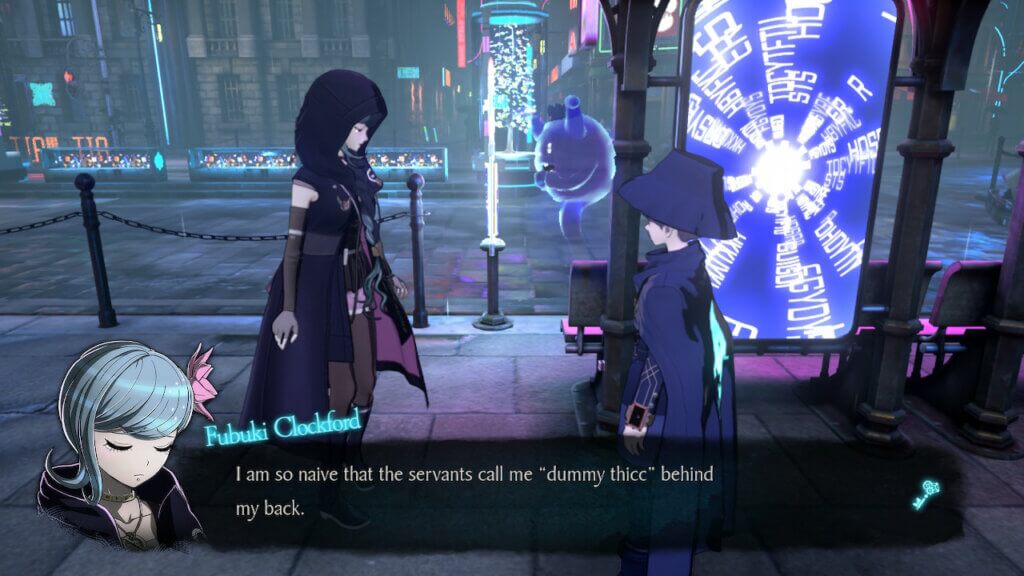
The opening of the game invokes a lot of nostalgia: our main character wakes up in an unfamiliar place, confused and unaware of what’s going on, and with his memories missing. The consequent despair-inducing actions take a toll on his mental health, and he is forced to solve the murders of those around him, some of whom are his friends, or risk dying himself. It’s enough for any murder-mystery fan’s blood to get pumping.
I loved the premise of Rain Code. The idea of a Noir-esque city being controlled by an evil organization (coughShinracough) that lies at the heart of many unexplained mysteries, all while the city is constantly being blanketed in a steady stream of rain did wonders for setting up the dark themes that were presented through the rest of the game. The neon lights shining through the rain and reflecting off puddles, the techno-jazz music that plays as you wander the streets, the severe difference between the haves and the have-nots–all of it created such a mysteriful and exciting vibe that made it hard to put the game down, even at 2 o’clock in the morning.
All of the writing and voice acting in Rain Code was great. Everything felt smooth. There were no glitches that I came across, no bad or awkward wording, no real grammatical errors, or any other issues that tend to plague the Visual Novel genre. The dialogue and interactions with Shinigami were easily my favorite part of the game, and it really showed how much passion the writers and localizers put into this title. There are so many references to the Danganronpa series, nods to other popular titles, and enough fourth wall breaking that I’m surprised my bedroom wasn’t covered in rubble by the time I finished the game. I adored how over-the-top Shinigami was. She is a degenerate of the highest level, and I stan her, her writers, and Anjali Kunapaneni for their glorious work.
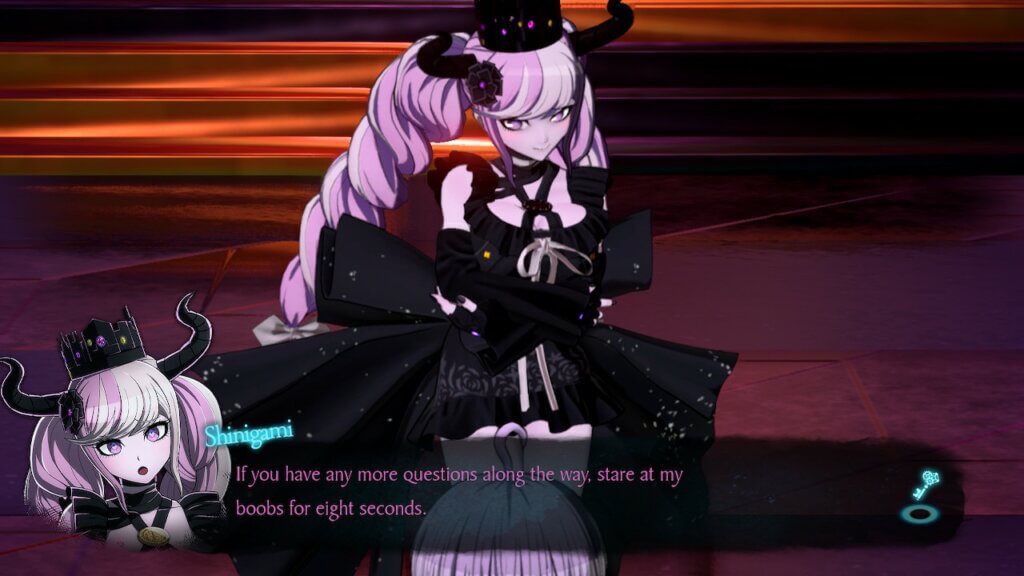
As far as the mysteries went, Rain Code felt comedically easy at times. More than once, something would be said or done where I would turn to my husband and make note of it before the murder had even happened. Obvious things would be pointed out or something would be pushed incessantly all before the actual murder took place. And once inside the Mystery Labyrinth, it got even worse. It felt like the game didn’t want me to fail, often throwing around remarks or hints throughout the whole thing, and these hints became even more obvious if a wrong choice was selected with Shinigami all but laying out what the answer was on a silver platter. This wasn’t the case with every single aspect of each mystery–there were definitely times where the intricacies of a mystery were more difficult to solve even if the overall whodunit bit was obvious. Granted, this was my personal experience, and I have been told I can be a killjoy at times because of how easily I can solve mystery games like this. (My husband refused to play V3 with me when it was released, opting to play through it by himself first so I wouldn’t ruin the mysteries for him.) Personal experience with this will vary, so take my opinion here with a grain of salt.
Content Warnings (Spoilers)
Master Detective Archives: Rain Code contains dark themes and imagery throughout the entire title, including, but not limited to: blood, murder, dead bodies, burned bodies, bodies with bullet holes and/or stab wounds, strangulation, skeletons, suicide, bullying, terrorist attacks, bombings, sexualization of characters and sexually fueled discussions, stalking, implied cannibalism, death penalty, false imprisonment, poisoning, kidnapping, and unethical expirementation.
While most murders are not witnessed in real time, there is a segment of the game where the player pieces together what happened in a comic book like fashion, which plays out in still images to depict the murder as it would have happened.
There is also a recurring scene where Shinigami uses her scythe to slit Yuma’s throat. The swinging of the scythe and Yuma’s reaction to seeing it is shown in color and 3D, then it swaps to a 2D side view in black and white showing the scythe following through and the subsequent, exaggerated blood spray. The blood is then shown on the wall in color to reveal a question that players must answer to continue the game. This happens multiple times in every chapter.
Verdict
The game as a whole is macabre, demented, and at times, in-your-face offensive. All of this is done to make players feel uncomfortable and unsettled using dark humor and horrific scenes. It wants you to question your views, your values, your humanity. Rain Code is so similar to Danganronpa in that way. The games are not meant to be a feelgood, hopeful story about characters rising to the daunting task before them and finding comradery in the trenches. The creators want players to feel despair at the darkness around them and force them to think the worst of everyone, even their friends. No one can be trusted. Everyone is a suspect, and anyone can turn on you at a moment’s notice. This is at its core what Rain Code is meant to be.
And it does a damn good job of that.
It’s for all of these reasons that I adored this game. From the setting and gameplay to the mysteries and the despair, it’s everything I’ve wanted to see in a Danganronpa successor. While there are things that I wasn’t as big a fan of, like the aspects of some of the mysteries and how closed off each chapter seemed to be from the rest, as a whole, Rain Code was a great first entry to what I hope will be a continuing series.
If you liked the Danganronpa series, get this game. If you like murder mysteries, get this game. If you like dark stories, get this game. If you like anime such as Deadman Wonderland, The Promised Neverland, Tokyo Ghoul, Higurashi, or any other similar titles, get this game. What else can I say? I’ll be the first to admit that Rain Code isn’t for everyone. But if you read any of the above and nodded your head along, then it was damn well made for you.
Purchase the Game
Master Detective Archives: Rain Code Standard (Nintendo Switch)
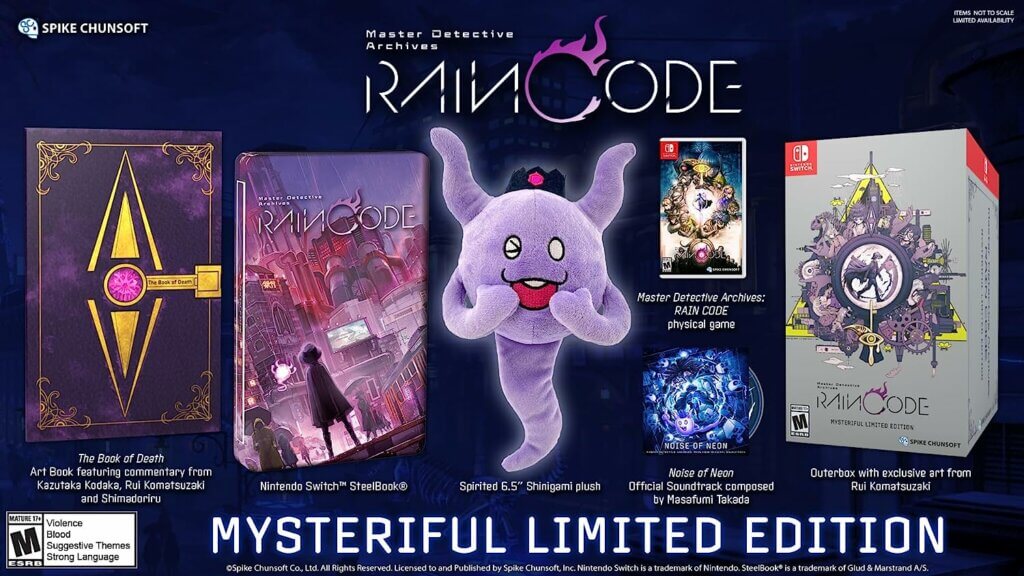
Master Detective Archives: Rain Code Limited (Nintendo Switch)
Credits
Original Concept and Planning by Kazutaka Kodaka
Directed by Takahiro Suzuki
Character Design by Rui Komatsuzaki
Subcharacter and Mystery Phantom Design by SHIMADORIRU
Main Scenario by Kazutaka Kodaka and Takekuni Kitayama
Subscenarios by Yoichiro Koizumi
Music by Masafumi Takada
Art by Rui Komatsuzaki
3D Character Modeling Lead Nobuyoshi Kanzaki
Motion Design Lead Tatsunori Ohashi
Environment Design Lead Taiju Yamamura
Effects Design Lead Hideaki Kurita
Action Planning Lead Yasuhiro Abe
Event Planning Lead Yuma Seda
Programming Lead Kiyoshi Nagata
Quality Assurance and Compliance Testing by Pole To Win Inc., KINSHA CO., Ltd., PTW Canada Solutions, Inc., PTW UK International Ltd., DIGITAL HEARTS Co., Ltd., and WitOne Okinawa Inc.
English Translation by DIGITAL HEARTS Co., Ltd., James D Hinson, Ben Parry, and Chaylen Pierson
Developed by Too Kyo Games
Published by Spike Chunsoft
The Good
- Fantastic art and music by Dangaonronpa Veterans
- Immersive and detailed story written by Kazutaka Kodaka
- Translation and localization is great with laugh-out-loud dialogue
The Bad
- Mysteries were easy to solve
- Long load times happened frequently

Featured Sponsor - JAST
The sweetest romance and the darkest corruption, the biggest titles and the indie darlings; for visual novels and eroge, there's nowhere better.
Big thank you to our supporters
From their continous support, we are able to pay our team for their time and hard work on the site.
We have a Thank-You page dedicated to those who help us continue the work that we’ve been doing.
See our thank you page